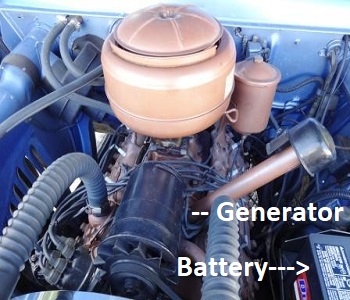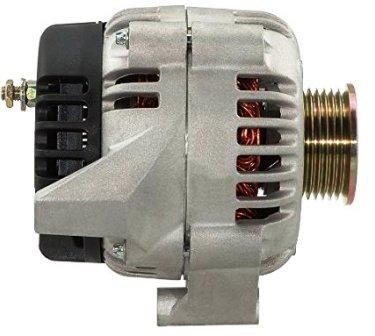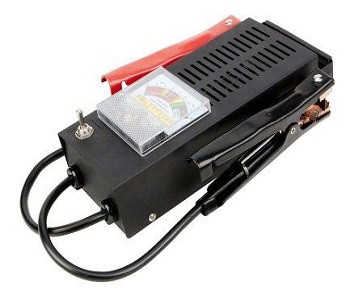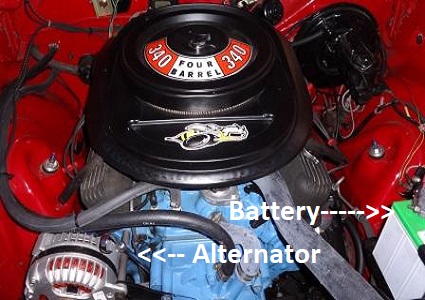
There’s no question that a classic car charging system seems archaic when compared to modern alternators and charging systems found on today’s cars. These low output, high maintenance charging systems can require a lot of attention throughout the years of ownership. Our classic cars do a lot of sitting. And every time you crank it up your pulling power out of the battery.
We look to the classic car charging system to replenish that removed electrical energy. Unfortunately, these low output systems will take a while to bring a battery back up to full charge. Generally speaking, the older the vehicle the longer it takes to recover. In fact, if you own a 1948 Cadillac fastback with the original flat head six, this car came with a generator instead of an alternator. If you own a 1970 Monte Carlo you’ll have a factory installed alternator.
The difference between an alternator and a generator becomes the type of current the charging unit produces. The generator supplies direct current while the alternator supplies alternating current. Obviously, the alternating current requires conversion to direct-current before it’s sent to the battery. This becomes the internal function of the rectifier bridge. Using a series of diodes it flattens out the alternating current signal and transforms it into direct-current.
In this article will discuss classic car charging system service and repair. These older charging systems have internal components that eventually wear out. In this situation, drivers go out to their vehicle and find a no start condition at some point. Therefore, we’ll cover how to verify the alternator output is below specification. In addition, we’ll talk about the options we have to solve these charging system issues with or without a professional auto repair manual.
Do I have an Alternator or Generator?

If you own a classic car from the 40s and 50s these came from the factory with generators. Nevertheless, many of these car owners converted these antiquated classic car charging systems to use the more modern alternators.
Car makers didn’t start installing belt driven alternators on the factory assembly line until the early 1960s. In fact, they still use this technology on cars and trucks today. With that said, the internal workings of a modern alternator look completely different than those from the 60s and 70s.
The older alternators remain serviceable. This means you can replace the internal brushes, diodes and even the rectifier bridge that we discussed above. However, modern alternators include more transistors and solid-state components that aren’t serviceable.
Should I Convert from a Generator to an Alternator?
The general answer to this question is yes you should. However, it really depends on how you view your classic car, how you use it and what you want to do with it in the future. The main reason for converting to an alternator remains the superior power output. Let me throw some numbers at you so you can see clearly, exactly how much more power we’re talking about.
A classic car generator on a 1940s or 1950s vehicle has a maximum power output of about 25 A. The problem becomes, to reach this maximum power output the alternator needs to be spinning in the 2,000 RPM range. When the vehicle is idling the classic car charging system only puts out about 5 to 10 Amps. Classic car owners are familiar with this situation as their lights usually dim and turn brown when the vehicle is idling. As you increase the RPM the headlights increase in intensity.
Alternator conversion kits usually adapt muscle car era automotive charging systems to fit seamlessly on these older classic cars. This boost the maximum output to about 70 A. But more importantly, even at idle, alternator output remains in the 40 to 50 amp range. Therefore, the benefits of converting from a generator to an alternator include faster battery recovery leading to a more reliable vehicle. It also eliminates the annoying problem of brown headlights at idle.
Classic Car Charging System Diagnosis and Repair

When our classic car charging system fails, we get a few common symptoms. Often we go out to the vehicle and it won’t start because the battery is dead. However, car owners might notice a few other symptoms before they reach the no start situation. Often when the alternator starts to fail the power output becomes diminished. These alternators can make a whining or high-pitched noise as they struggle to maintain maximum power output. In addition, drivers might notice that power accessories seem to struggle.
With power windows they might go up and down a lot slower. Sometimes, the interior blower motor won’t maintain the speed the driver is use to. Of course, symptoms of a failing alternator also include dim headlights that get brighter as the driver increases RPMs. There’s a simple way to test the battery and the charging system at the same time. The tool connects to the battery and reports on the alternator output in the battery’s ability to carry a load.
After we have identified that an alternator repair becomes absolutely necessary now we need to decide what action we’ll take. An alternator is an item that comes apart. This means we can replace failed internal components. The caveat remains the availability of these replaceable parts. Drivers can lift the part number off of the alternator case and search for an alternator overhaul kit followed by that part number. Two other options remain for those in need of classic car charging system repair.
Buying Choices for Replacement Alternators
We can buy a brand-new alternator. Although this is the most expensive option, it remains the most efficient way to deal with the problem. New parts usually carry a one-year warranty compared to the 90 day warranty of a re-manufactured unit. Brand-new parts also have brand-new bearings and all other related moving parts. In a situation where you purchase a rebuilt alternator, you never know what you’re gonna get. In a few cases I’ve picked up a rebuilt alternator at the customer’s request. They were looking to save money on the charging system repairs, but the reliability of the rebuilt alternator disappointed them.

